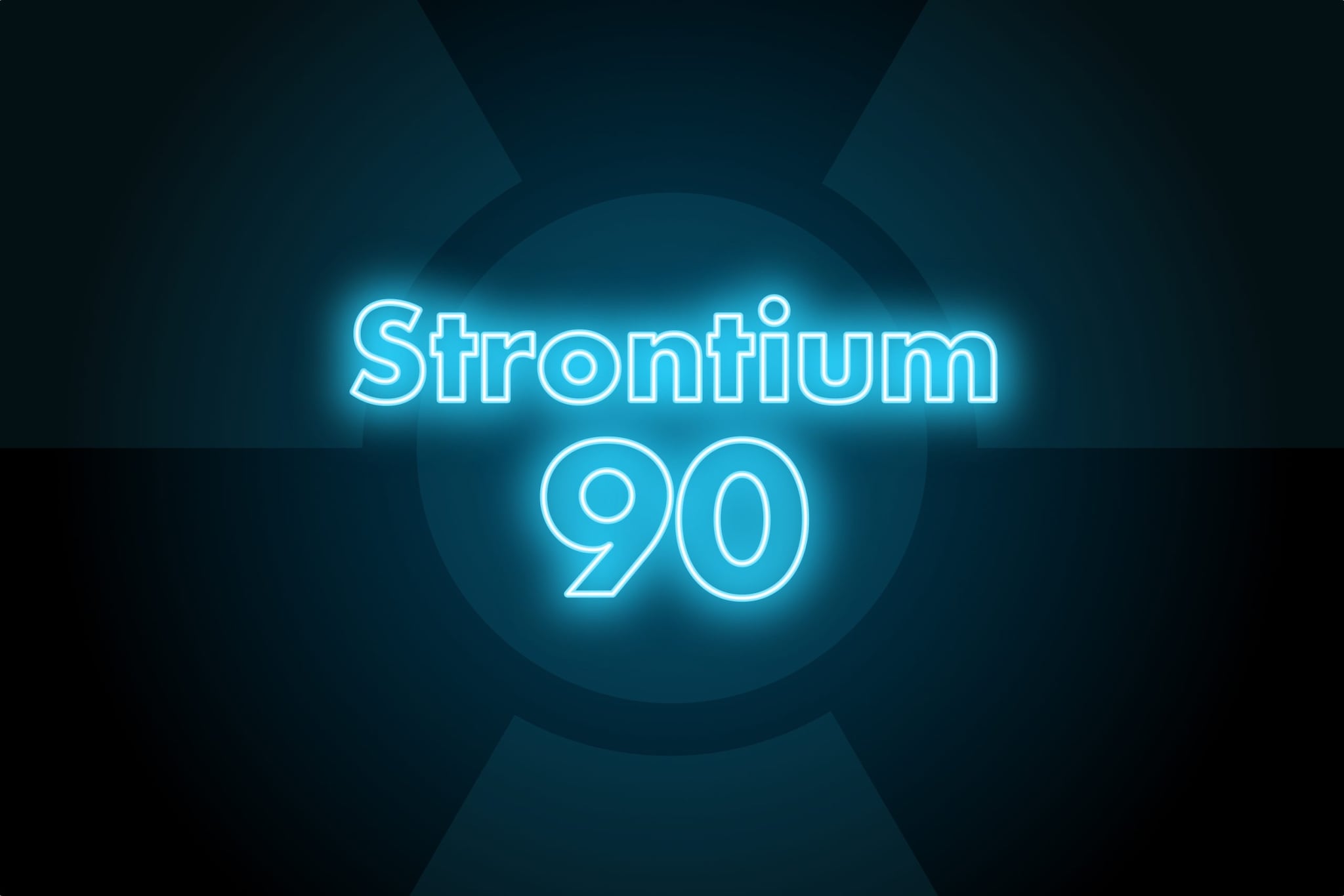At a glance
Strontium-90 (Sr-90) is a soft metal that is used as a power source because it generates heat as it decays. Sr-90 can cause cancers in the bone, bone marrow, and soft tissues around the bone. As it decays it can cause burns to the eyes and on the skin.

Strontium-90 properties
Half-life: 29.1 years
Mode of decay: Beta radiation
Chemical properties: Chemically reactive; can create halide, oxide, and sulfide compounds
Appearance: In its pure form, Sr-90 is a soft, shiny silver metal, but it quickly changes to yellow when exposed to air.
Use
Because Sr-90 generates heat as it decays, it is used as a power source for space vehicles, remote weather stations, and navigational beacons. It also is used in industrial gauges and medically, in a controlled manner, to treat bone tumors.
Origin
Sr-90 is produced commercially through nuclear fission for use in medicine and industry. It also is found in the environment from nuclear testing that occurred in the 1950s and 1960s. It can be found in nuclear reactor waste and can contaminate reactor parts and fluids.
Form
Sr-90 is a soft metal. It can be present in dust from nuclear fission after detonation of nuclear weapons or a nuclear power plant accident.
Risks
Sr-90 can be inhaled, but ingestion in food and water is the greatest health concern. Once in the body, Sr-90 acts like calcium and is readily incorporated into bones and teeth, where it can cause cancers of the bone, bone marrow, and soft tissues around the bone.
Sr-90 decays to yttrium 90 (Y-90), which in turn decays by beta radiation. Wherever Sr-90 is present Y-90 is also present. Because of the beta radiation, Y-90 poses a risk of burns to the eyes and on the skin from external exposure.
More information
- Public Health Statement for Strontium (Agency for Toxic Substances and Disease Registry)
- Sr-90 Basics (Environmental Protection Agency)
